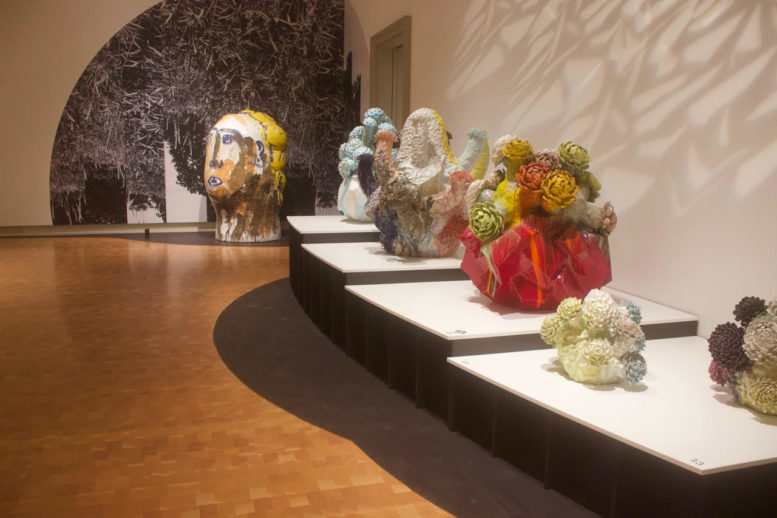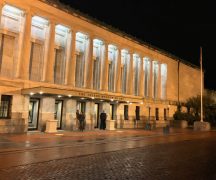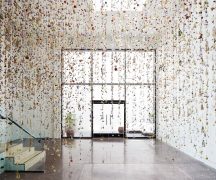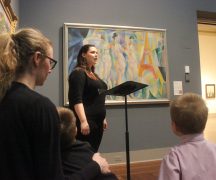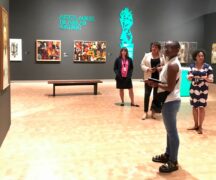By DAVID DUPONT
BG Independent News
Matt Wedel’s father was a potter. His mother was a gardener.
Both those influences are evident in “Matt Wedel: Phenomenal Debris” at the Toledo Museum of Art. The exhibit, Wedel’s first solo show in a museum, opened last weekend. The exhibit captures the past 15 years of his work – more work is also on display downtown at River House Arts, 425 Jefferson Ave. He shares the space with fellow potters
In a talk on opening weekend with curator Diane Wright, he also credited his mother with the emotional heft of his work.
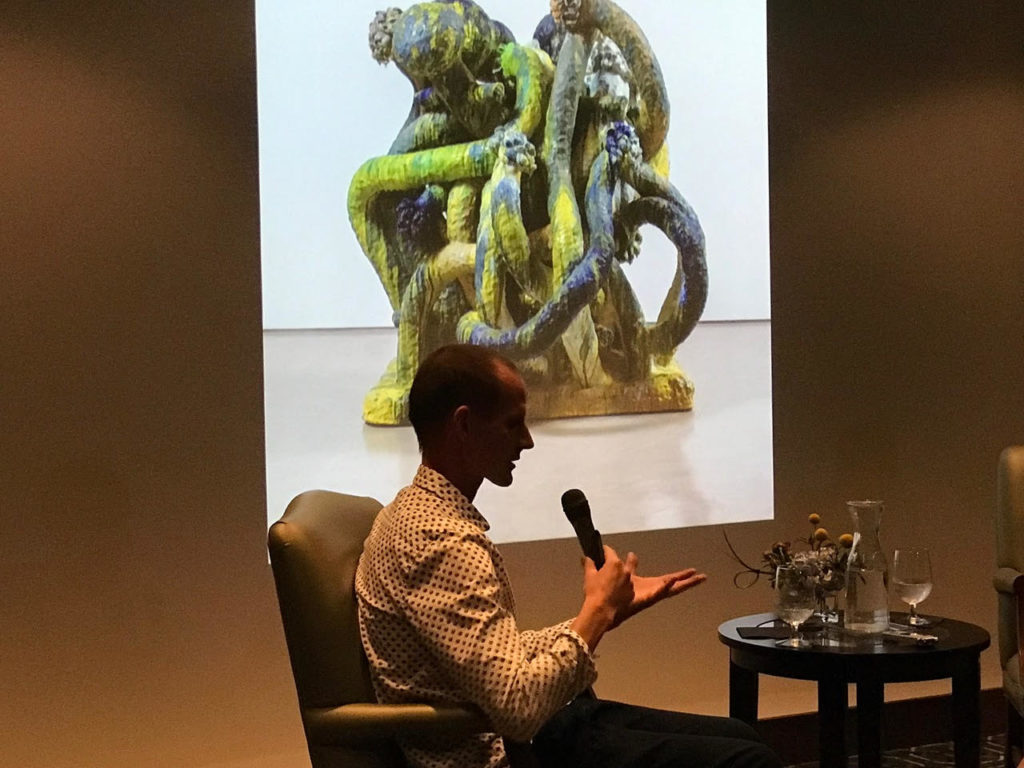
Though not strictly arranged chronologically, the show, stretched over five sections in the Levis Gallery, serves as an artistic autobiography.
“Clay is a recording device for my own psychology,” he said during the conversation with Wright.
Wedel works alone, mixing his own glazes, and wrangling, with use of a hoist, immense sculptures that can weigh two thousand pounds or more and tower almost three times his height into the kiln he built in his studio.
His family, including his two children, was on hand for the artist talk last Saturday, both for the conversation with Wright, and later for the opening of “Mapping Desire: Explorations n Making and Thinking in Contemporary Ceramics“ at River House. The kids brought friends – I’ve never seen so many youngsters at an art reception.
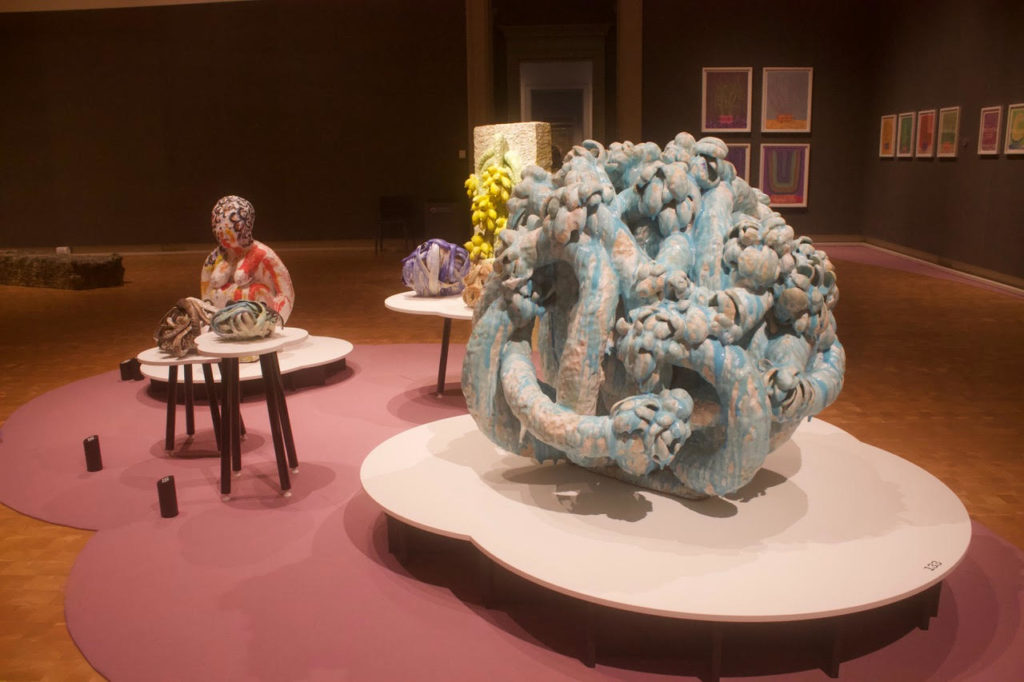
All this all enhanced the feeling that the Levis Gallery had been turned into a garden.
His Flower Trees have tendrils that grow like Jack’s beanstalk, but instead of rising skyward they wrap around and embrace what is around them. In some painted iterations they seem like giant slugs.
Earlier Flower Trees have series of carefully crafted flower petals. Each took six gestures to complete, Wedel said. Then his hands rebelled. He found they didn’t work the same way. The pedals became softer, more abstract. “My abilities and inabilities” played out in the execution of his work, he said.
The work is constantly in a state of evolution. Wedel approaches each piece by wondering what he has learned since he was last in this space.
That space is his studio in southwest Ohio, where he moved from southern California. The vegetation of that sunnier and drier clime still dominates his imagination.
This garden of art is populated by figures. He has a series of each piece simply called “Head.” They evoke large vessels. The faces look ancient with a sense that the thoughts roiling behind the visages are contemporary. One room is dedicated to these portraits. On the wall of the gallery, as on the wall of his studio, he scrawled the phrase : “There is being awake, and there is being. (Awake).”
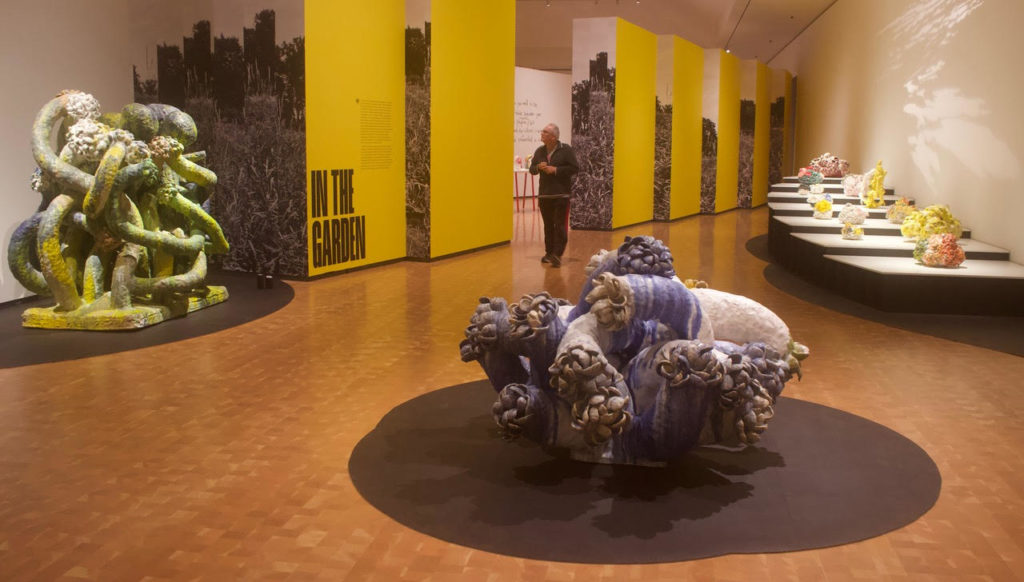
The heads reflect this philosophy of being ever aware of the present – the joy of the present or its bleakness. The pandemic, Wedel said, was difficult, but he literally worked through it.
The exhibit ends with contrasting pieces.
The newest, inspired by the pandemic, are two “Mourning Benches.” Visitors are invited to join the impassive heads at the end of each and sit on the benches. The title plays on both a period of sadness and “morning,” a time of hope.
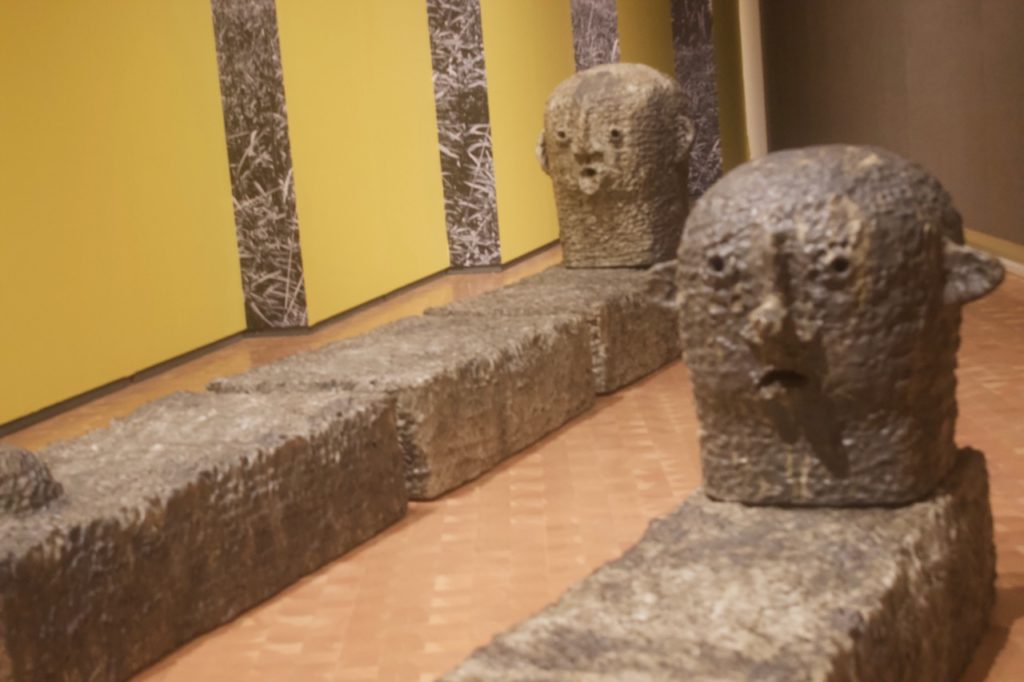
Nearby is “Lemon Tree.” The fruit is saturated with color of the sun and has nipples like a nurturing breast. The lemons hang from vines like those that have twined through the exhibit.
The show is a celebration of creation, in Wedel’s case, prolific creation. One wall is devoted to gouache paintings of potted plants, and another facing wall has shelves of small, craggy sculptures in the “Flower Tree” series.
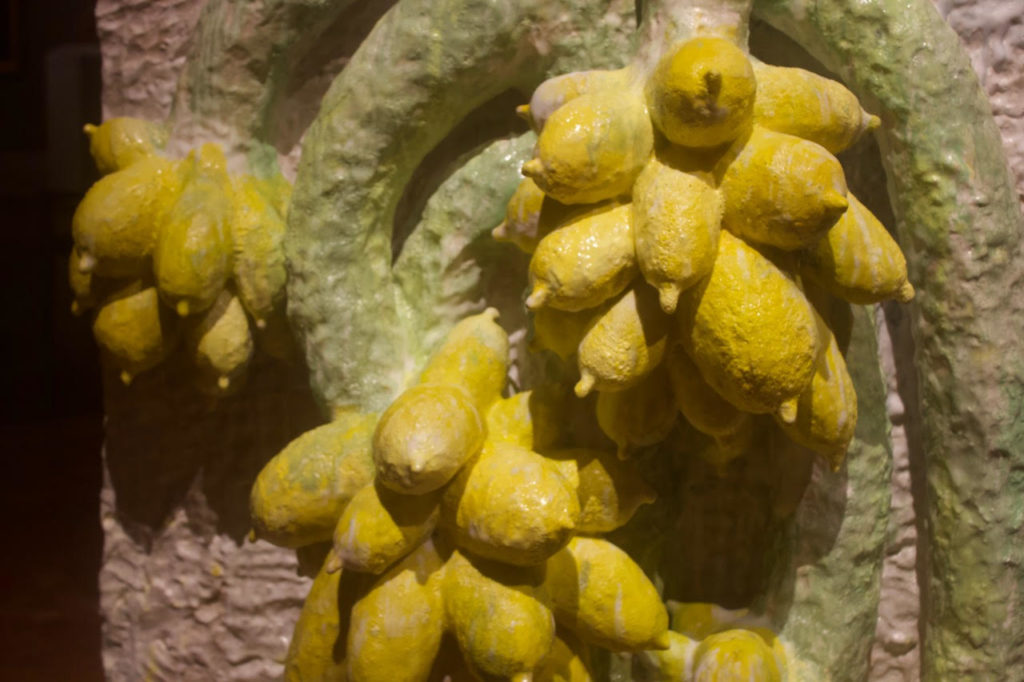
With 135 works in the Toledo Museum show, all from the last 15 years, one would think this exhausts his output.
Still the two recent pieces at the River House show Wedel’s work heading in new direction. The porcelain masks in the Mythology series – one displayed separately and 23 displayed as a group – reveal a deeper dread, even horror, in the human soul.
The show, “Mapping Desire,” also spotlights work by Alex Ferrante, a visiting professor at the University of Toledo, and Detroit artist Ebitenyefa Baralaye, both complementary to Wedel’s work.
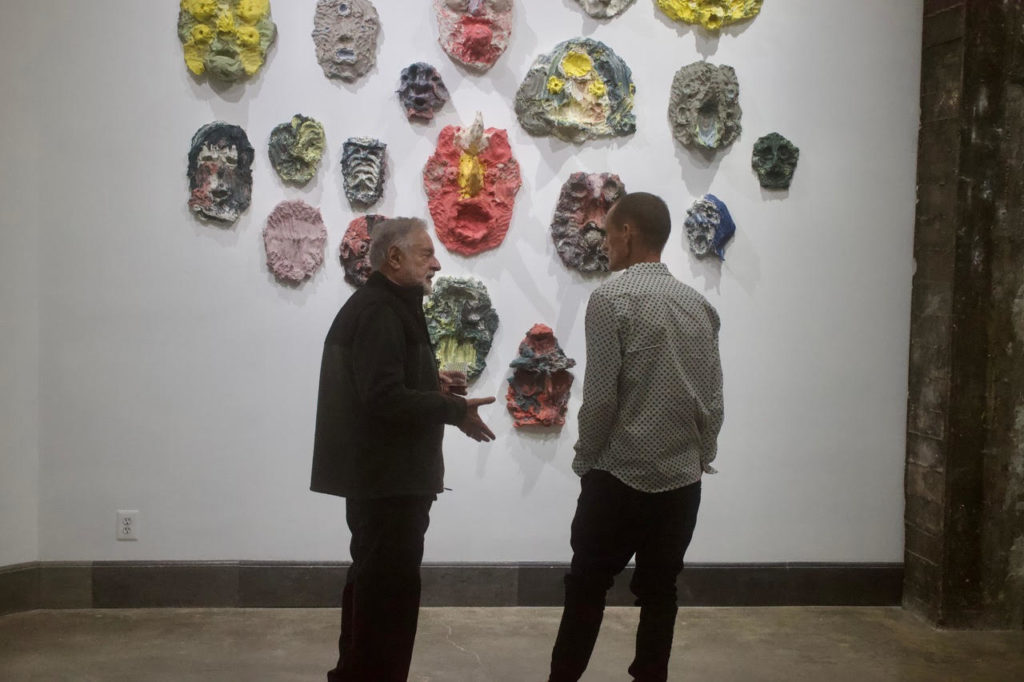
Ferrante offers abstract expressionistic sculptures that depict landscapes filtered through his inner eye.
Baralaye, like Wedel, uses the shape of a vessel as a form of sculptural portraits, though his pieces are less explicit in their human form. His portraits celebrate family and friends, as well as one, “Black and Blue III,” paying tribute to music legend Louis Armstrong.
River House Arts gallery hours are Wednesday – Friday, 11 a.m. to 6 p.m. or by appointment click here or by calling/texting 419-441-4025.
“Matt Wedel: Phenomenal Debris” continues at the Toledo Museum of Art through April 2.

